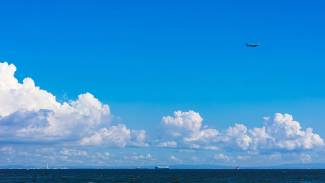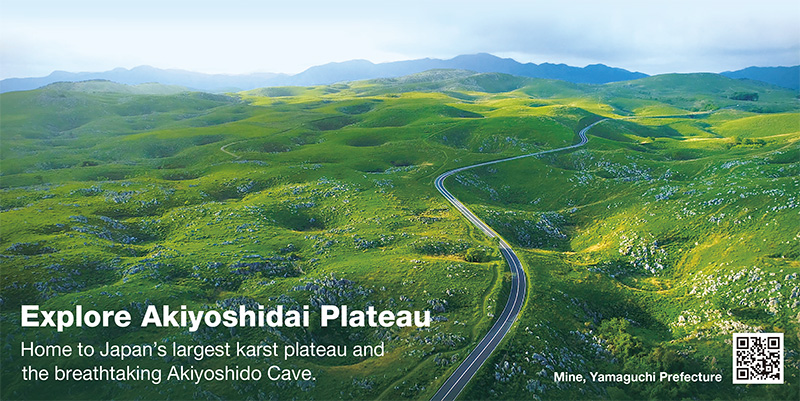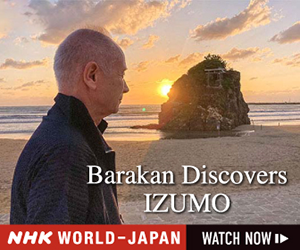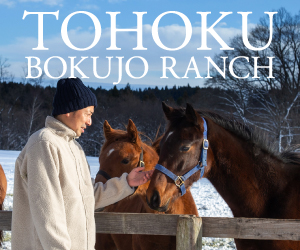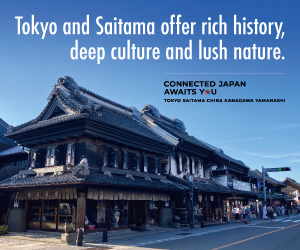AKIYOSHIDAI
A KARST WONDERLAND FORGED BY NATURE
In Yamaguchi, the westernmost prefecture on Honshu, Mine is home to many treasures waiting to be discovered by international travelers. Chief among them is the Akiyoshidai Plateau, where one can venture under the sea while remaining on land by exploring the mysterious underground world of the Akiyoshido Cave.
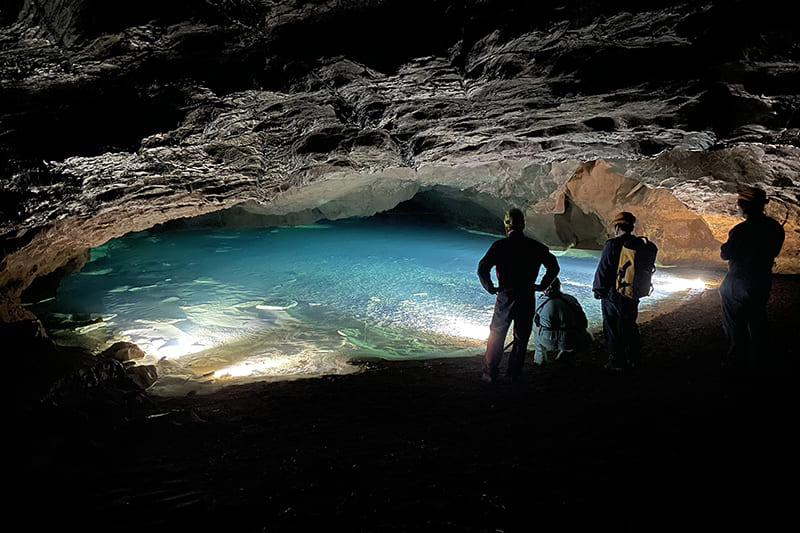
Journey to the sea bottom
Over 350 million years ago, Akiyoshidai was a coral reef deep beneath the sea, until it turned to limestone via natural processes. Then, unimaginably powerful tectonic forces split the Earth and lifted the seabed, creating Mine’s limestone plateau. But nature wasn’t done shaping this corner of Japan yet. Over time, rains dissolved some of the limestone, leaving behind a striking karst landscape of caves and white rock formations that look like sheep grazing among its green fields. Observed against a blue sky, it is one of the most visually stunning sites in all of Japan.
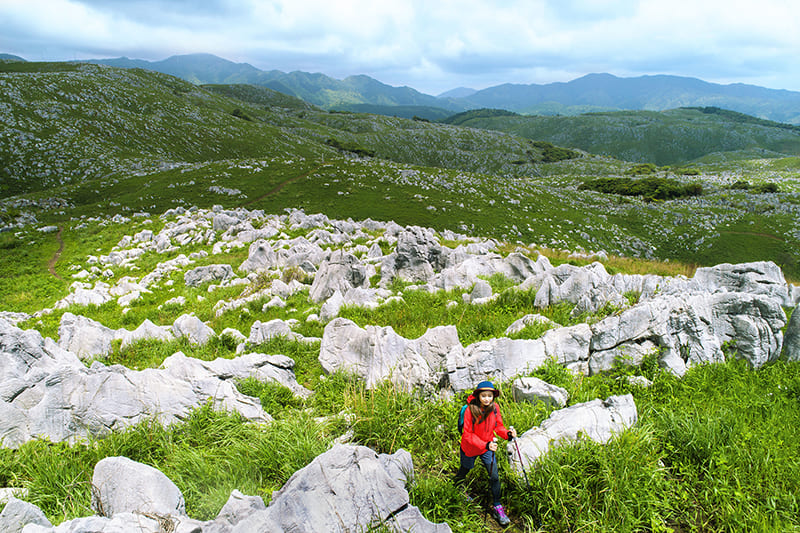
Akiyoshidai also exemplifies the Japanese spirit of humanity coexisting with nature. A long time ago, the plateau’s pampas grass provided thatch for homes, and in return humans made sure to preserve the ancient, green seabed from overgrowth. This tradition continues to this day in the form of controlled burns called yamayaki that are held annually on the third Sunday in February. As the fire consumes the fields, briefly turning everything black before exposing the white limestone underneath, it prevents trees from growing too large and destroying Akiyoshidai’s scenic, open landscape.
However, the Akiyoshidai Plateau isn’t merely for admiring. The “Karstar” geopark center helps visitors learn about the area’s fascinating geological history while the on-site cafe provides a relaxing place to enjoy drinks and light meals with scenic views of the raised seabed. The area is also a popular spot for walking, running, stargazing, cycling and scenic drives amid the limestone-punctuated landscape. However, the plateau’s unquestionable main attraction is the sprawling Akiyoshido Cave.
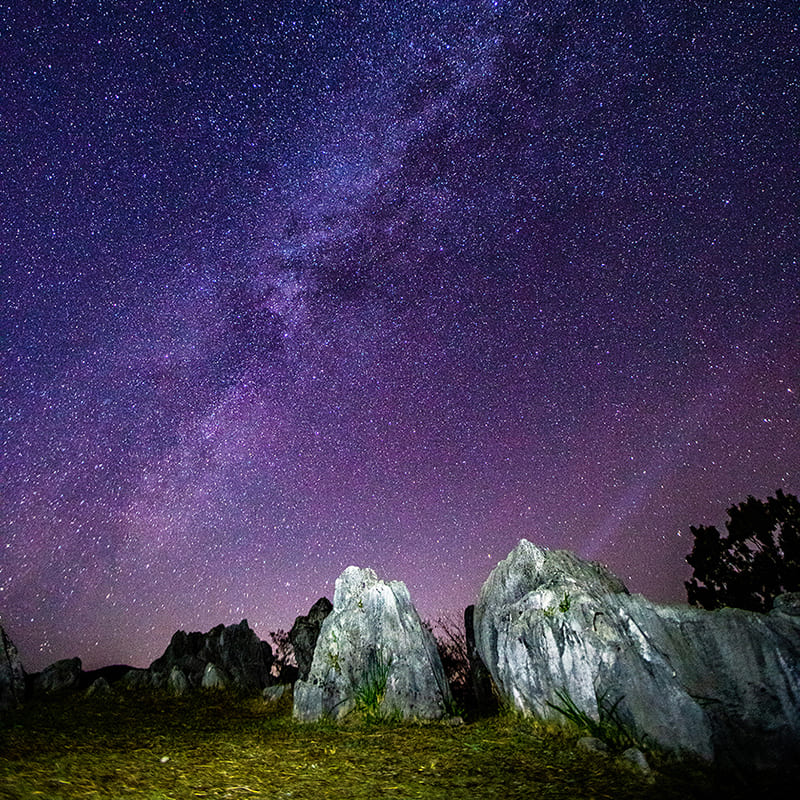
Some 100 meters beneath the plateau, Akiyoshido is one of Japan’s most stunning limestone caves and a designated Special Natural Monument. The cave stretches for about 11 kilometers, making it the second-longest system of underground passages in Japan. A portion spanning around 1 km has been opened to the public.
The cave maintains a microclimate of 17 degrees year round, making it refreshingly cool in summer and pleasantly warm in winter. Once inside, visitors are treated to a display of otherworldly limestone formations, including giant stalagmites, rimstones that resemble terraced rice fields, and other wonders formed over millions of years.
Akiyoshido has three entrances, including one with an elevator for quickly and easily returning to the plateau. Multilingual audio guides are available in Japanese, English, Chinese and Korean.
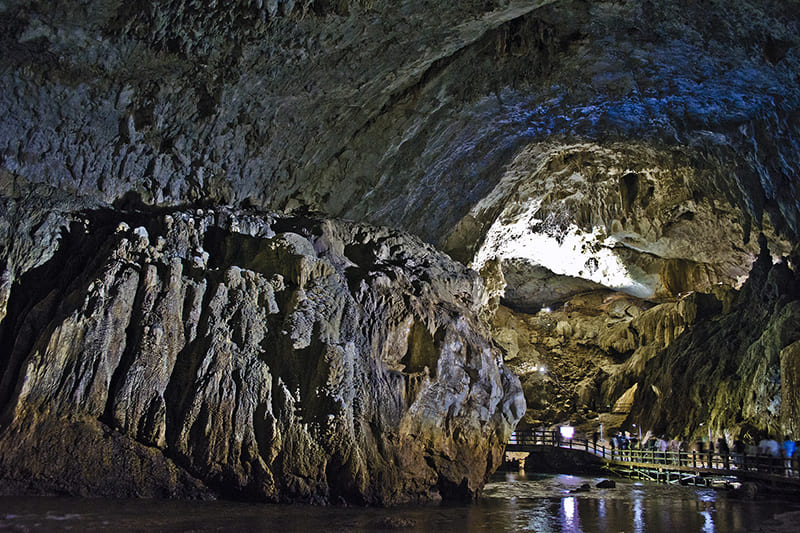
In addition to the main visitor route, two special caving tours allow for deeper exploration of the cavern, as long as one member of the group can understand basic Japanese.
The Kotogafuchi Long Course is ideal for experienced adventurers. This four-hour, 1-km guided tour of the secret parts of Akiyoshido costs ¥35,000, including entry, gear fees and insurance, for one group of six per day.
The Riverside Short Course is geared toward spelunkers and families with children. It’s a two-hour, 450-meter exploration conducted twice a day for one group of six. This tour is ¥25,000 for adults and ¥18,000 for children.
There are no audio guides for either tour, but English guides can be arranged in advance.
Precautions in English are also handed out.
Activities on ancient seabed
Akiyoshidai offers a variety of activities for families, nature lovers and solo adventurers. Beneath Japan’s largest karst plateau lie 453 caves, with three — Akiyoshido, Kagekiyodo and Taishodo — open to the public without any specialized gear required.
For fans of the great outdoors, the Akiyoshidai Plateau offers walking and running courses along unparalleled vistas that change colors with the seasons and amaze visitors anew when they return to Mine at different times of the year. With no Wi-Fi or cellphone signal (except for the geopark center), it’s an ideal place to unplug and get some steps in with hikes from one to three hours long. Cycling is another great option — both standard bicycles and electric bikes can be rented from the Tourist Information Center for ¥1,000 to ¥2,000 a day to explore Akiyoshidai and other parts of Mine at a swifter pace.
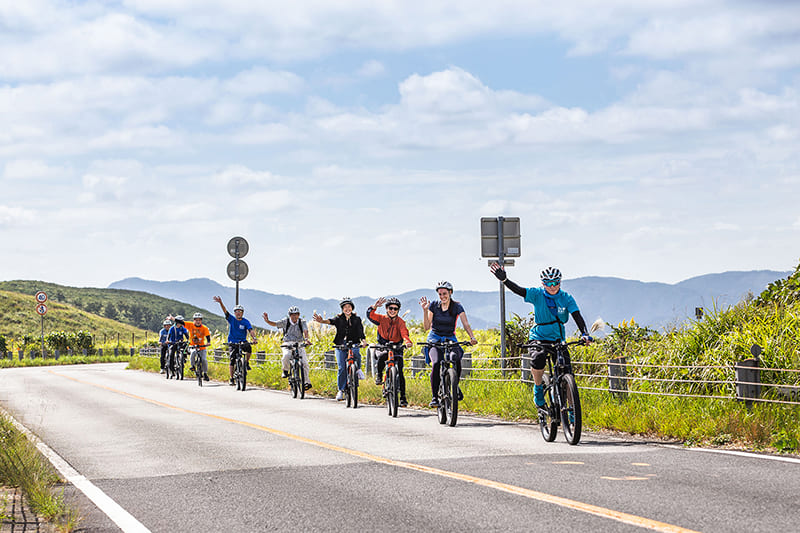
For something a little different, try a Segway tour across the plateau. After a one-hour orientation, visitors can join a 90-minute guided ride to the Mito Observatory, which offers scenic views of this otherworldly landscape. Other mobility options include motorized rickshaws that allow three people to putter along with a roof over their head.
Visitors can additionally enjoy motorcycling, yoga, camping, stargazing and botanical observation of over 1,500 plant species. In an era of streetlights and electric signs, stars at night have become an increasingly rare sight, but thanks to the continued efforts of the Mine Municipal Government, Akiyoshidai remains free of light pollution.
Mine is a repository of natural beauty that can be experienced at one’s own pace, making it the perfect destination to relax and reconnect with the land.



